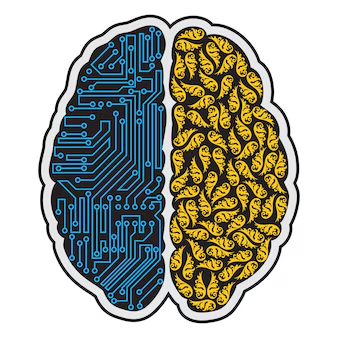
Cognitive behavior therapy in brief
Cognitive Behavior Therapy Meaning is Continuously evolving in the field of mental health, CBT remains an incredibly effective and efficient solution for addressing a number of psychological disorders with empirical support. Having being a therapist and an advocate or proponent of the process, I know what it can do to people. This massive post will walk you through the answer in an attempt at defining what cognitive behavior therapy is about.
Cognitive Behavioral Therapy, or CBT for short, is a form of therapy that examines the connection between thoughts and feelings on behavior. It operates on the basic principle that what we think and believe has a great deal to do with how we feel, behave. This will help someone to have more control over unwanted thoughts as well their behaviors and emotions, thus enhancing the quality of life for that individual.
In this article, I will give you a complete overview of cognitive behavior therapy its historical development and the wide range of techniques used in CBT. In this article, we will examine its promise in healing mental health conditions and compare it to familiar therapy modalities. Also, I will share tips on choosing a good CBT therapist and actionable advice for those interested to explore this wonderful way of healing
Understanding the meaning and principles of cognitive behavior therapy
Cognitive behavior therapy (CBT) is a type of talking treatment which focuses on the relationship between thoughts, feelings and behaviour. At the heart of CBT is the idea that our thoughts and beliefs are responsible for determining how we feel, which results in subsequently acting. If someone can pinpoint and then change thought patterns that are unhelpful or irrational, their likelihood of gaining improved mental health improves dramatically.
Cognitive behavior therapy means that we became directly involved the very moment when serving communities started to give patients more hope than factory with some pills earlier. It acknowledges that our thoughts are not always true or useful, and by contesting these beliefs we can foster healthier thought patterns which will help to elicit more appropriate and functional ways of feeling as well as behaving.
One of the other key concepts directly out CBT is Cognitive restructuring. It requires recognizing and reframing negative or irrational thinking, substituting constructive self-talk for discouraging explanations. In this context, one becomes aware of the connection among the thoughts, feelings and behavior about something, strategies are given to deal with them effectively
The history and development of cognitive behavior therapy
Starting in the 20th century, some of psychology’s most impactful studies laid down the groundwork for cognitive behavior therapy. Aaron T. Beck was one of the first people to popularize this idea when he discovered medical school students felt neural shame that could increase depression in response to even minor setbacks, thus developed cognitive theory with a patient population who suffered from major depressive disorders. Beck’s work turned to the ways in which negative and irrational thought patterns contributed towards creating, furthering or inhibiting recovery of depression.
Another major figure whose work contributed to the related development of cognitive-behavioral therapy was Albert Ellis, who formulated Rational Emotive Behavior Therapy (REBT) in the mid-1950s. Ellis highlighted the value of rigidly confronting the irrational beliefs and diligently inserting rational, adaptive substitutes.
Cognitive behavior therapy has evolved over the years and is now used in treating a variety of mental health conditions such as anxiety disorders, substance use disorders, eating etc. Over the years, different therapeutic methods and techniques have been created and polished which has made CBT more flexible to fix a wide range of psychological difficulties
The role of thoughts, emotions, and behaviors in cognitive behavior therapy
Cognitive behavior therapy basically says that our thoughts, emotions, and behaviors work together in a cycle. This triangle is the cornerstone of CBT treatment
All thoughts and beliefs — These have a significant impact on our emotion regulation, which in turn impacts subsequent behaviors. When negative thought patterns lead to anxiety and depression, they can manifest in a number of ways including catastrophizing — making things seem worse than they are (e. g., I knew my mom was 15 minutes late so she must be dead), overgeneralization — basically thinking that because one bad thing happened every possible situation will always turn out badly) or black-and-white thinking which only lets us see the extremes; never the grey areas between!
5. Emotions- Feelings are simply a function of thoughts/ beliefs When caught in mental traps of negativity, we may feel such deep emotions as sadness; or irrational fear and anger which can fuel unhealthy behaviours.
Behaviours — Our behaviours are very often dictated by our thoughts, and emotions. Harmful behaviors, such as avoidance and procrastination or alcohol/drug use to cope with anxiety can maintain these thought patterns and negative affect leading to a cycle of suffering.
The therapist in cognitive behavior therapy partners with the client to search out and then challenge irrationally-thinking models, control emotions and guide more beneficial behaviors. Trifecta has led many lives to cycle down more negative paths than positive, yet in finding the root cause of these three components and how they entangle together can lift a soul up again instead of tearing them apart.
Practical applications of cognitive behavior therapy in treating mental health disorders
Cognitive-behavior therapy is a well-respected and widely used treatment for many types of mental health disorders. Practical applications apply to several psychological conditions, including
Anxiety disorders: CBT is shown to be particularly effective in treating anxiety disorder, including Generalized Anxiety Disorder (GAD), Panic Disorder and Social Phobia. Through disputing their irrational catastrophic thinking, and learning better coping strategies for when they may trigger the anxiety attack themselves.
Depression: CBT is incredibly effective in treating depression by focusing on negative thought patterns, cognitive distortions and behaviour activation.
Obsessive-Compulsive Disorder (OCD): For example, cognitive behavior therapy can be helpful to people with OCD by teaching them to identify and challenge their intrusive thoughts and compulsions, making it easier for them learn how to cope with symptom management.
Post-Traumatic Stress Disorder (PTSD): CBT approaches including exposure therapy and cognitive re-processing to help the patient challenge their thoughts, feelings, behaviors associated with trauma have been effective in treating PTSD.
Substance Abuse Disorders: CBT helps people with substance use disorders work on their distorted thought processes and the behaviors that sustain or support drug abuse, as well offering strategies for avoiding relapse.
Cognitive behavior therapy is also used to address eating disorders, such as anorexia nervosa and bulimia nervosa due the distorted body image perceptions these individuals have of themselves.
These are just some real-world applications of CBT. This flexibility and potency have led it to become an increasingly used model in the realm of mental health, likely as a key means for those who suffer from various symptoms directing against their psyches.
The effectiveness of cognitive behavior therapy in improving mental well-being
Many research works and meta-analyses have indicated the success of cognitive behaviour therapy in enhancing mental health as well remedying a number of psychological illnesses. The results of those studies show the effectiveness in these therapies, some key findings are:
Depression: CBT is considered as effective as medication for mild to moderate depression and has the advantage of reduced relapse rates (Cuijpers et al, 2013).
Hofmann & Smits (2008) carried out a meta-analysis that indicated CBT is extremely effective in the treatment of multiple anxiety disorders, such as generalised worry disorder and panic attacks, social fear.
Substance use disorders: Cognitive behavior therapy has demonstrated efficacy in treating substance abuse, particularly when integrated with interventions such as motivational interviewing and contingency management (McHugh et al., 2010).
Review on EDs — Hay et al M (2014) also found that CBT significantly reduced symptoms of bulimia nervosa and binge-eating disorder as compared to control groups, provided an improvement in the majority of studies for those with primary or co-morbid anorexia nervosa.
Chronic pain: CBT has been found to be effective in alleviating the distress associated with physical symptoms and improving coping skills as well as quality of life for individuals who suffer from chronic or persistent pain (Eccleston et al., 2009).
This evidence underscores (a) the effectiveness of CBTs in enhancing mental well-being and treating a broad array of psychological issues, CBT assists individuals in changing maladaptive thought patterns and behaviors which enables them to develop more appropriate coping strategies, as well as enabling better emotional resilience.
Techniques and strategies used in cognitive behavior therapy
Cognitive behavior therapy uses a number of techniques — such as identifying and challenging negative thought patterns, releasing suppressed emotions that he or she has been unwilling to articulate or otherwise acknowledge and learning relaxation analysis skills. There are some standard practices for CBT
Cognitive restructuring: This method involves becoming more aware of and arguing with negative or irrational beliefs, then changing them into something that is probably true and helpful. It teaches people to identify and change negative or unhelpful thought patterns, such as overgeneralization, catastrophizing, and black-and-white thinking.
Behavioral experiments: These are organized activities planned to verify the fact of ideas and traditions for an individual. You can start collecting evidence to counter your Negative Automatic Thoughts and reframe them by running these experiments.
Exposure therapy is a way of gradually exposing people to situations they fear or avoid it the symptoms appearing, in time with controlled and definitions environment. It assists executing desensitization to help such individuals face and conquer their fears or nervousness.
Mindfulness practices: CBT frequently utilizes mindfulness, including meditation and mindful breathing exercises to assist people in living more in the present moment as well as being less judgmental or self-critical of thoughts and emotions.
These include relaxation techniques such as progressive muscle relaxation, visualization and deep breathing exercises to help them cope with stress and anxiety more efficiently.
Problem-solving skills training: This involves helping everyone learn to both identify and solve problems more systematically, thereby gaining abilities that may enhance effective coping or decision-making.
Behavioral activation: This strategy concentrates on performing enjoyable and valuable activities especially useful for people suffering from depression or low motivation.
Individuals are provided with unique, individualized treatments incorporating these range of techniques often using in tailored combinations to achieve maximum effect. The work of cognitive behavior change is collaborative, engaging clients in s practice-oriented way to develop understanding and competence that can then be applied outside the session itself.
Cognitive behavior therapy vs other therapeutic approaches
But there are many types of therapy out there that exist other than CBT, even though cognitive behavior is one the most effective treatments for a host of mental health disorders. CBT vs Other Therapeutic Modalities
Types of TherapyPsychoanalytic therapy: Unlike CBT, which deals with the present and future state; Psychoanalytic therapy focuses on an individual’s past experiences and subconscious processes. This exploratory film is looking to find out and deal with the deepest conflicts that are caused by us, human beings.
Humanistic therapy: Person-centered therapy and gestalt are more focused on self-actualization, personal growth and the relationship between patient & therapist. CBT aims to change thoughts and behaviours, humanistic therapies aim for self-exploration and acceptance.
Interpersonal therapy: It works on enhancing interpersonal relationships by discussing the issues that face us. Cognitive and behavioral patterns are the primary focus of CBT, however.
Dialectical Behavior Therapy (DBT): Like CBT, DBT utilizes mindfulness and emotional regulation techniques; however in addition to these foundational principles, it includes acceptance-oriented strategies as well as emphasizes interpersonal effectiveness skills.
TreatmentsAcceptance and Commitment Therapy (ACT): ACT is an approach to therapy that focuses on oberving difficult thoughts and emotions, but not allowing them t interfere with values-based living. While CBT works to change thoughts, ACT asks people to look at their thoughts and let them come like leaves in a stream without analysis or judgment.
It is important to emphasize that these various approaches are not exclusive and may in some cases be combined or even incorporated into a person’s treatment plan based on their unique requirements and preferences. Therapy selection is often guided by the presenting issues, therapist experience and expertise, as well as individual preference and goals.
Finding a qualified cognitive behavior therapist
If you think cgt might be a good fit for your needs, and it often is even as an adjunct to medication treatment or while taking in patient treaments, its essential that you are treated by someone with expereince and qualifications. Check out these tips and tricks that will help you in your search:
Get References- Check in with your personal physician, mental health providers or even friends and family for CBT therapists they would recommend near you.
In particular, verify the therapist’s credentials: Is this person adequately trained and certified in cognitive behavior therapy? Most therapists will have a bio on their website or an online profile outlining the type of therapy they specialize in and what training they’ve had.
Experience: Although newer therapists still work wonders, you might want to look for those who had a lot of years practicing CBT if it is your first time doing this type of therapy.
Conclusion: The power of cognitive behavior therapy in transforming lives
Throughout this comprehensive article, we have explored the meaning, principles, and practical applications of cognitive behavior therapy. From its historical roots to its proven effectiveness in treating a wide range of mental health disorders, CBT has emerged as a powerful and transformative therapeutic approach.
The key to the success of cognitive behavior therapy lies in its ability to empower individuals to become active participants in their own healing process. By identifying and modifying unhelpful thought patterns, regulating emotions, and developing more adaptive behaviors, individuals can break free from negative cycles and cultivate greater emotional well-being.
Cognitive behavior therapy offers a structured and evidence-based framework for addressing psychological challenges, while also providing a range of practical techniques and strategies tailored to individual needs. Whether you are struggling with anxiety, depression, substance abuse, or other mental health concerns, CBT can offer a path toward lasting change and personal growth.
I have witnessed firsthand the transformative power of cognitive behavior therapy in helping individuals overcome their struggles and reclaim control over their lives. It is a testament to the resilience of the human spirit and the ability to reshape our thought patterns and behaviors for the better.
If you are considering cognitive behavior therapy, I encourage you to take the first step and seek out a qualified therapist who can guide you on this journey. Remember, the path to healing and personal growth begins with a willingness to challenge your thoughts and embrace new perspectives.
Embrace the power of cognitive behavior therapy and unlock your full potential for a life filled with greater emotional well-being, resilience, and fulfillment.Are you ready to unlock the power of cognitive behavior therapy and transform your life? If you’re searching for a comprehensive understanding of “cognitive behavior therapy meaning” and its practical applications, this article is a must-read. We’ve covered everything from the history and principles of CBT to its effectiveness in treating various mental health disorders. Don’t miss out on this opportunity to gain valuable insights and take the first step towards improved mental well-being
Frequently Asked Questions (FAQs):
Q1: What is the meaning of cognitive behavior therapy? A1: Cognitive behavior therapy, or CBT, is a form of psychotherapy that focuses on the interplay between thoughts, emotions, and behaviors. It is based on the principle that our thoughts and beliefs significantly influence our emotional states and subsequent actions. By identifying and modifying maladaptive thought patterns, individuals can gain greater control over their emotions and behaviors, ultimately improving their overall well-being.
Q2: How effective is cognitive behavior therapy? A2: Numerous research studies and meta-analyses have demonstrated the effectiveness of cognitive behavior therapy in improving mental well-being and treating various psychological disorders, including depression, anxiety disorders, substance abuse disorders, eating disorders, and chronic pain. CBT has been found to be as effective as medication in treating mild to moderate depression, with the added benefit of lower relapse rates.
Q3: What techniques are used in cognitive behavior therapy? A3: Cognitive behavior therapy employs a variety of techniques and strategies, such as cognitive restructuring, behavioral experiments, exposure therapy, mindfulness-based techniques, relaxation techniques, problem-solving skills training, and behavioral activation. These techniques are tailored to the specific needs and goals of each individual and are often used in combination to achieve optimal results.
Q4: How do I find a qualified cognitive behavior therapist? A4: To find a qualified cognitive behavior therapist, seek referrals from healthcare professionals or trusted sources, check the therapist’s credentials and experience, assess compatibility during an initial consultation, inquire about their specific approach to CBT, and consider telehealth options if necessary. Finding the right therapist is crucial for the success of the therapy.
Q5: How does cognitive behavior therapy compare to other therapeutic approaches? A5: While cognitive behavior therapy has proven to be highly effective, it is not the only therapeutic approach available. Other modalities, such as psychoanalytic therapy, humanistic therapy, interpersonal therapy, dialectical behavior therapy, and acceptance and commitment therapy, may be more suitable for certain individuals depending on their specific needs and preferences. In some cases and continue the article from where it left off.
In conclusion, cognitive behavior therapy is a transformative force that has the potential to change lives, one thought at a time. Its principles and techniques offer a roadmap to emotional well-being, empowering individuals to navigate life’s challenges with resilience and self-awareness. Embrace the power of CBT, and embark on a journey of self-discovery and personal growth that will leave a lasting impact on your life and those around you.
Discover more from zenfitpulse
Subscribe to get the latest posts sent to your email.

